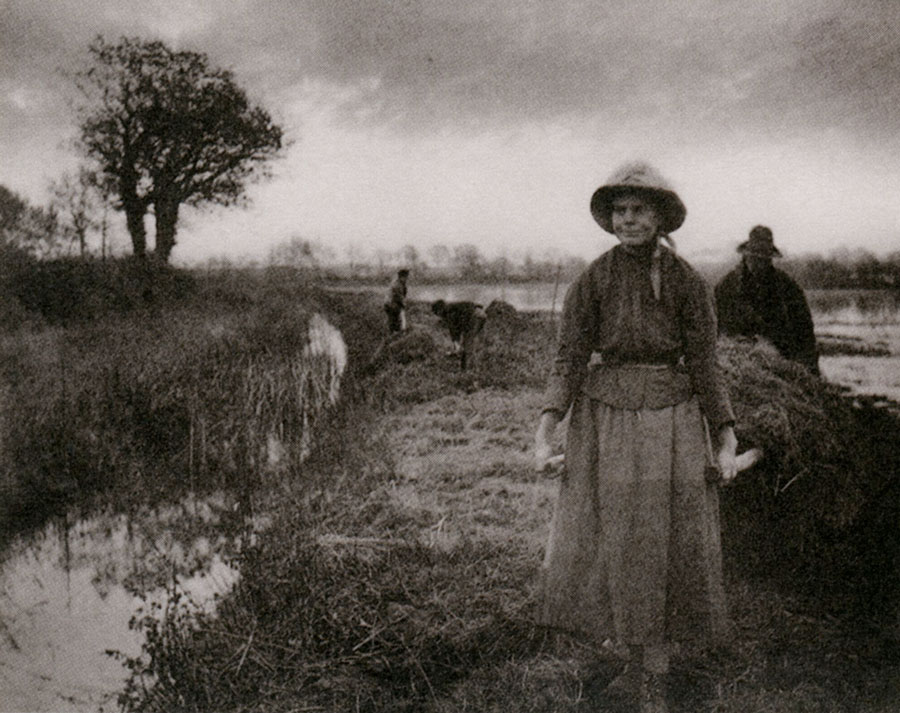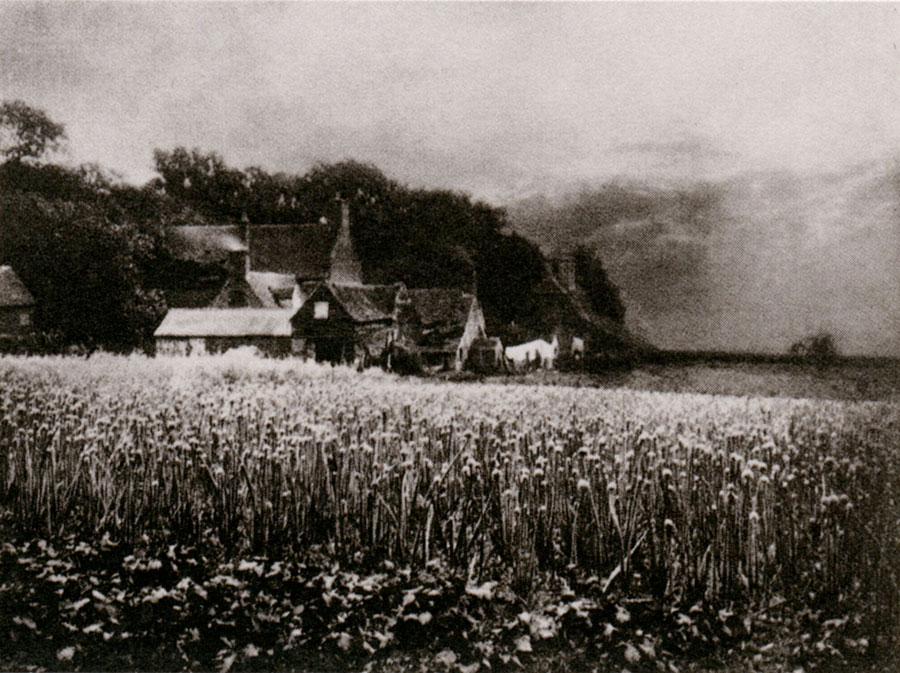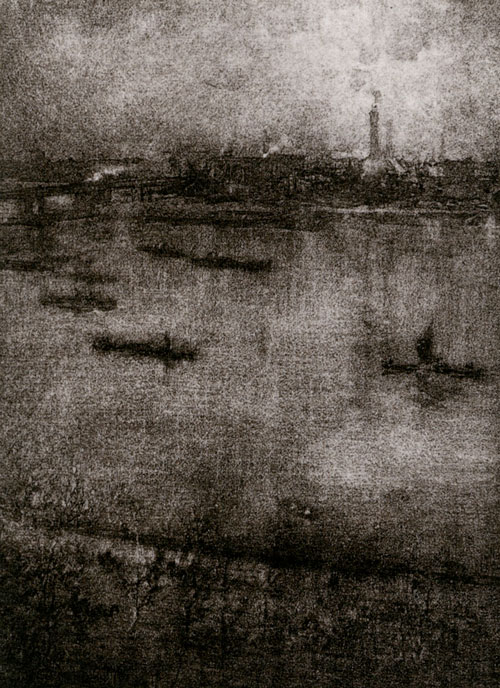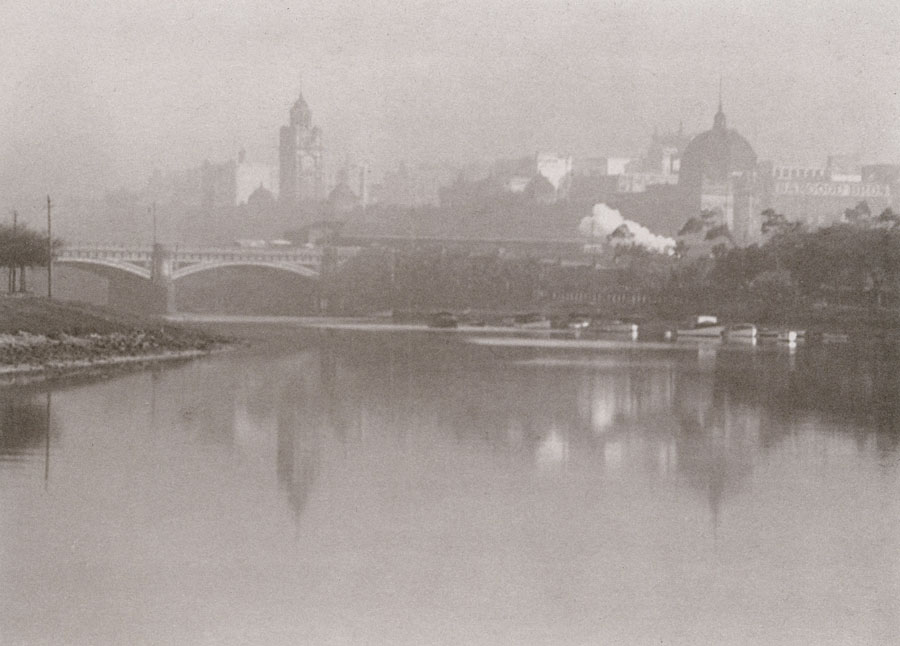INTRODUCTION
Pictorialism and Soft-Focus Photography
What makes a photograph a work of art?
The Pictorialist art photographers of the 1890s — beginning with exponents in Great Britain, Europe and America, then the wider world — were confident they knew the answer, and prolific in their practice and theorising. Beautiful and pleasing photographs justified themselves.
Any means could be employed to achieve the desired result, including manipulation of the negative or print.
In the Pictorialists' view, there were many excellent photographers before the 1890s, but they were technicians rather than artists. Exceptions were made for the grainy, textured portraits on paper by David Hill and Robert Adamson in the 1840s, and for the unique soft-focus style romanticism of Julia Margaret Cameron in the 1860s.
Two photographer-theorists of the 1870s and 1880s were the founders of Pictorial theory and practice — H.P. Robinson (1830-1901) and P.H. Emerson (1856-1936). Robinson argued that photography could be an art by following the rules of composition learnt from the fine arts; Emerson promoted a naturalistic style in which soft-focus was employed to match human vision.1
Throughout the 1880s and 1890s the availability of cheap, easy-to-use cameras and commercial printing services made it possible for large numbers of people to take up photography; the Pictorialists emerged from the ranks of those who had begun work as amateur snapshooters.
In 1892, a group of amateur photographers broke away from London's long established Photographic Society (which became the Royal Photographic Society in 1894), on the grounds that it gave insufficient support to those wanting to explore creative photography. George Davison's blurred, impressionistic landscape The onion field of 1890 is regarded as the beginning of Pictorialism.
In 1893 Davison and others formed The Linked Ring Brotherhood to promote their understanding of photography as an art. The British photographer, Alfred Horsley-Hinton (1863-1903), was a founding member of The Linked Ring Brotherhood and a major influence on Pictorialism internationally, through his moody landscapes and his role as editor, from 1893, of the influential journal The Amateur Photographer.
The Linked Ring Brotherhood formed the Photographic Salon in London, which continued until 1909.
By the turn of the century, 'Pictorial' was established as the term that distinguished art photographers from the generic professional or the amateur. ('Pictorialism' did not achieve currency until after the decline of the movement). 'Pictorial' derived from H.P. Robinson's textbook of 1869, Pictorial Effect in Photography, but its practitioners were also described as 'photo-impressionists' or, derisively, as 'fuzzy wuzzies'.
The latter tag arose from the Pictorialists' embrace of images in sombre, atmospheric low tones without much detail or clear narrative, rendered in soft-focus, often to the point of looking blurry.
 |
|
 |
P.H. Emerson
Poling the marsh hay 1886 platinum photograph 19.8 x 28.9 cm |
|
George Davison
The onion field 1890 photogravure from Camera Work 18:5,1907 |
Pictorialists employed a variety of printing processes including the use of gum bichromate, oil and bromoil to suppress detail, alter tonalities and emphasise highlights in the quest for overall harmony and coherence in their pictures.
In 1902 a new group — the Photo-Secession, led by the American photographer-critic-curator, Alfred Stieglitz — claimed even higher moral ground as art photographers who quested after pure subjectivity and a modernist concept of originality. In reaction to the Photo-Secessionists' quest for novelty simply for its own sake, a conservative group, The London Salon ofPhotography, formed in 1910; it replaced the former Photographic Salon and, through the 1920s, continued to be the main exhibition venue for Pictorialists world wide.
The conventional view is that, as a progressive movement, Pictorialism finished by the 1920s. Although certain individuals continued making work in the style throughout the 1930s and 1940s, few younger photographers were attracted to it after the early 1930s.
Characteristic of Pictorialism was the role played by dedicated groups and societies, and by international exhibitions and journals in promoting the idea of individual artistic freedom. Ironically, one of the chief criticisms of the movement's achievements was how easily a homogeneous style developed and then declined into picture-making formulas (still practised by many camera clubs today).
Pictorialists deliberately distanced subject matter and style from the everyday prosaic world. Their taste for soft-focus, impressionistic effects had little, if anything, to do with the radical style of painting in France in the 1860s and 1870s; it drew inspiration from the traditions of picturesque landscape art, and the type of semi-abstract nocturnes and tonal images of the American painter and printmaker, James McNeill Whistler.
Many apologists for Pictorialism argued for the truth of an impressionistic vision on the quasi-scientific grounds that this matched the way human vision worked.
Their real goal was to counter the mundane world of facts, represented by the detail of photography, and to assert the priority of imagination and subjective truth.
Modernists in the 1930s totally rejected Pictorial propositions about truth, but nevertheless were the beneficiaries of their forebears' explorations in theory and in practice.
Pictorialism provided a new vocabulary of photographic images and effects which are still revisited and renewed by many contemporary photographers.
- H.P. Robinson, Pictorial Effect in Photography: Being hints on composition and Chiaroscuro for photography, London: Piper & Carter 1869; P.H. Emerson, Naturalistic Photography: For students of the art, New York: Spon, 1889.
| |
|
 |
above:
John Kauffmann
The Grey Veil, c.1910
Left:
James McNeill Whistler
The Thames, 1896 lithotint
|
Art Photographer- main page
or return to John Kauffmann special page



